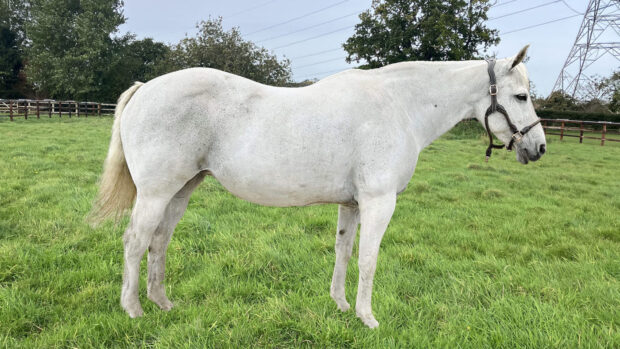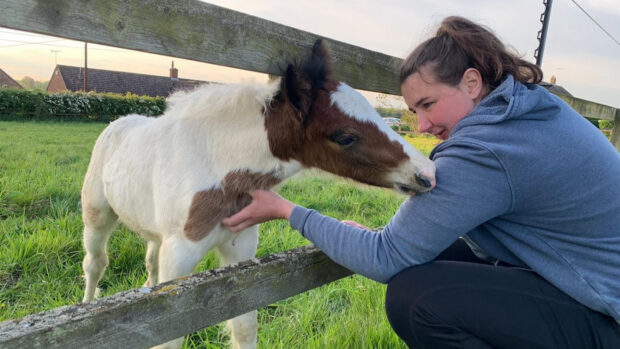Industry experts are warning that a rise in obesity is a real and significant threat to the health of Britain’s equines.
The 2015 National Equine Health Survey (NEHS) recorded 23% of horses and ponies in the UK as overweight — up from 16.9% in 2014 and 7.8% in 2013. As in humans, too much weight can increase the risk of serious and life- threatening conditions for horses.
Dr Sue Dyson, from the Animal Health Trust, described obesity as “a potential silent torturer” at the World Horse Welfare conference this month (10 November).
She warned there is a common misconception about what constitutes a healthy weight and urged vets to be clearer.
“We must be direct and tell people when their horses are too fat,” she said.
“There has to be global education — not just the lay person but the veterinary professional as well. We have to educate owners, trainers and judges.”
| Related articles |
She said she now sends around an eighth of her equine clients home with diet plans.
Laminitis in horses not usually susceptible to the condition and increased risk of injury and arthritis are areas of particular concern to Dr Dyson.
“Not only does increased body load potentially exacerbate the clinical signs of osteoarthritis, we also know that through the metabolism of fat, there are chemical mediators that can actually enhance the osteoarthritic process,” she added.
“You do not see obese racehorses, elite endurance horses, elite event horses or professional polo ponies.
“However, we do see obese show ponies, dressage horses and lower-level competition horses.”
Other recent studies also show excess weight is a problem for British equines.
Out of 792 veterinary-registered horses in Great Britain, 31.2% were overweight
(Robin et al, 2015) and in 158 horses studied in the East Midlands, 20.6% were too fat (Stephenson et al, 2014).
Dr Pat Harris, from the Waltham Equine Studies group, is a European veterinary specialist in equine nutrition.
“Obesity is a problem, particularly in our leisure and pleasure horse population,” she told H&H. “All the work that we are doing and our surveys show us that.”
However, the NEHS recorded the number of owners using weight tapes increased from 50% in 2014 to 64% this year — perhaps showing an increased awareness.
It also found that almost all owners and keepers of overweight equines took steps to manage their horse’s weight.
What is causing it?
Over-rugging, the human obesity crisis, lack of exercise and “fashion” are among the causes for fat horses, said Dr Dyson.
Dr Harris added that other factors, such as the nutrient content of many equine pastures and perhaps even selection over the years towards good doers, could be resulting in the increase of recorded cases.
Raised awareness coupled with owners being more honest about their animal’s body condition could also be to blame, she added.
Sam Chubbock, from World Horse Welfare, agreed that much of the evidence is based on owner questionnaires rather than veterinary diagnosis.
“Even so, the results of this year’s NEHS make alarming reading,” she told H&H. “The problem of excess weight is too prevalent and can be as much of a welfare concern as being significantly underweight.”
What can be done?
“Worryingly we are seeing an increasing number of concerns relating to overweight or obese horses,” said Gemma Stanford of the British Horse Society.
World Horse Welfare has a series of “right weight” materials on its website.
“We also need to give owners the confidence to take the necessary steps in managing their horse’s weight, which can be made very difficult due to the peer pressure often experienced in livery yard situations,” added Ms Chubbock.
“If all horses on a yard are grazing on a lush field of grass, in thick rugs — it makes it very difficult for one owner to strip graze their horse or leave it unrugged.”
Rugged horses do not need to use as much energy to keep them warm, so this can be stored as fat instead.
Steps such as soaking hay, using small- holed hay nets, minimal energy-providing concentrate feeds, no treats, more exercise and removing rugs can all help.
Dr Harris added that prevention is better than cure and that managing weight loss involves more than just reducing energy intake — horses need the right quality protein, vitamin and mineral support. Any weight loss programmes also have to take into account that horses are trickle feeders and cannot be left for long periods without forage.
“There may be an increase in awareness, but there needs to be even more,” said Dr Harris. “We need to encourage all areas of the industry to promote a lower body condition score as being positive.”
H&H advises owners to speak to your vet or nutritionist if you have concerns.
Case study
Dollar, a 14hh gelding, arrived at World Horse Welfare’s Penny Farm centre when very overweight, suffering from laminitis and intermittent lameness.
Over nine months of rehabilitation, Dollar lost 28 stone to reach a healthy weight.
“This figure often shocks people, as it can be very difficult to judge how much extra weight a horse is carrying,” Ms Chubbock said.
“To many people, Dollar only appears slightly overweight initially, so it comes as a real shock to discover that his excess weight is equivalent to carrying two or more adults 24 hours a day.”
Once he had lost the weight, he was no longer lame and his laminitis was brought under control.
Ref: H&H 26 November, 2015





